212-204-0075
info@pyvot.tech
CERi L-column2
Features
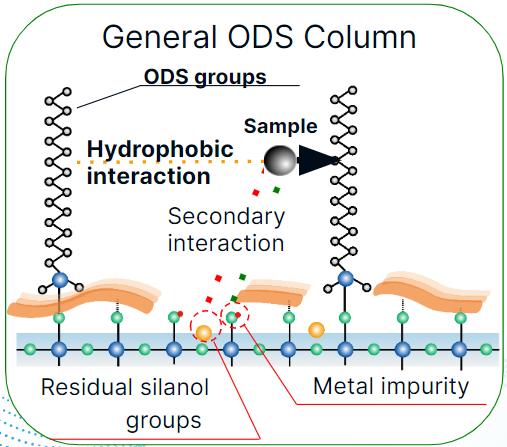
An important feature of the L-column series is the end-capping technology. `Since the end-capping process has a great effect on the performance of the column, it is a feature that makes a difference between column manufacturers.
In a general ODS column, silica gel and ODS groups are bonded at one point and the silanol groups on the surface are modified and coated by end-capping treatment; however, if this end-capping is inadequate, silanol groups and metal impurities remaining on the silica surface will interact with the analytical sample and affect the peak shape.
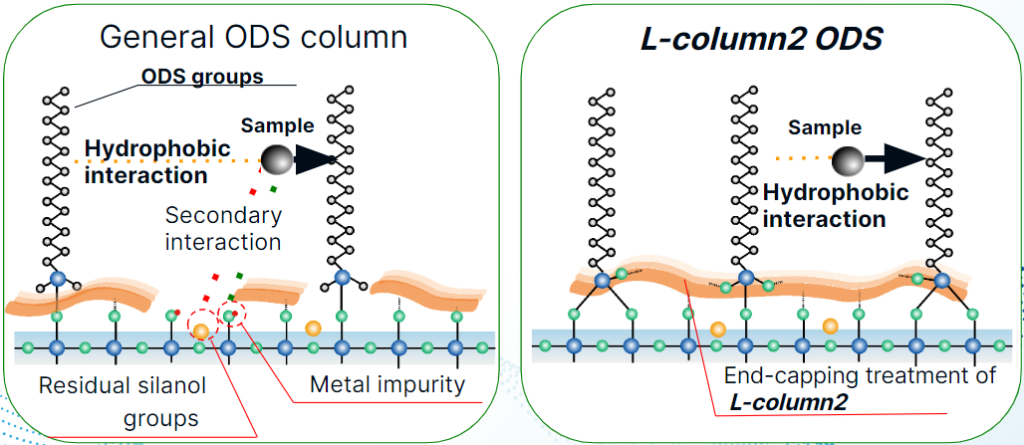
Furthermore, the advanced end-capping process of the original development is applied. This has made it possible to significantly reduce the effects of residual silanol groups and metal impurities.
Why Is L-column 2 chosen?
| • High acidic durability | • Use for a long time |
| • Low adsorption of basic compounds and coordinates | • Improve peak shape and quantitative |
| • Good reproducibility | • Use for quality control |
| • Pioneer of high-performance column | • Reliable of CERI’s work |
| • Pioneer of high-performance column |
Properties of L-column2
| Particle | High-purity mesoporous silica gel |
| Particle size | 2 μm, 3 μm, 5 μm |
| Pore size | 12 nm |
| Surface area | 340 m2/ g |
| Carbon contents | 17% (C18) |
| Bonded phase | C18, C8, C6-Phenyl |
| End-capping | High-temperature gas phase end-capping |
| USP category | L1, L7, L11 |
| Usable pH range | C18, C8: pH 1 – pH 9, C6-Phenyl: pH 2 – pH 7 |
Performance
High Acidic Durability
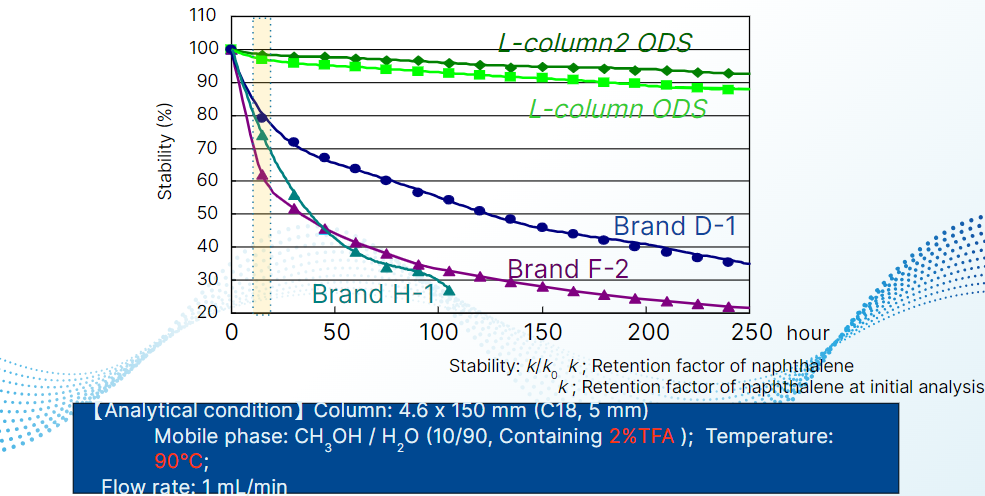
This is the result of analyzing L-column2 and its predecessor L-column with other manufacturers under severe acidic conditions.
While the holding time of other manufacturers fluctuates by 20% or more from the initial value in about 10 hours,
L-column2 is stable even if it is used for 250 hours or more,
therefore, the same column can be used for a long time, leading to cost reduction.
Low Adsorption of Basic Compounds
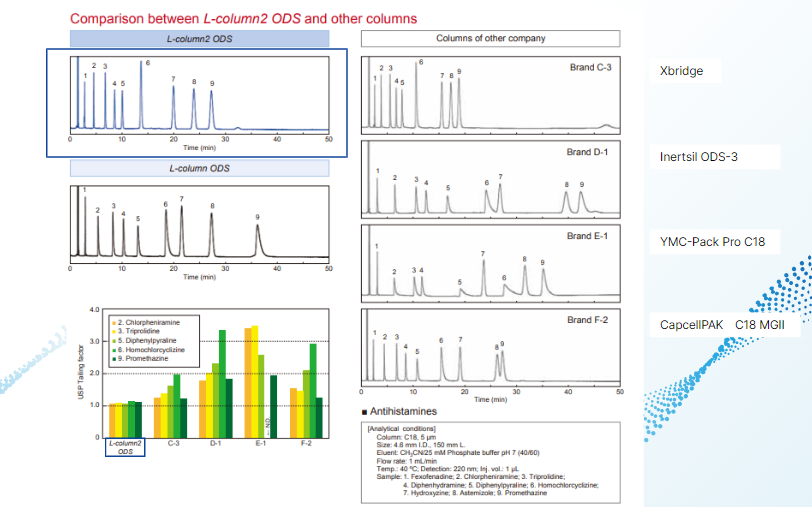
Basic substances interact with column silanol, causing delayed retention and tailing.
L-column2 has a good peak shape in all components compared to other manufacturers.
In the field of analysis of basic drugs, it is very useful for separation from impurities and quantitative analysis.
It has been adopted by many pharmaceutical companies since the launch of L-column.
L-column 2 is also very popular among Japanese pharmaceutical companies.
Low Adsorption of Coordinating Compound
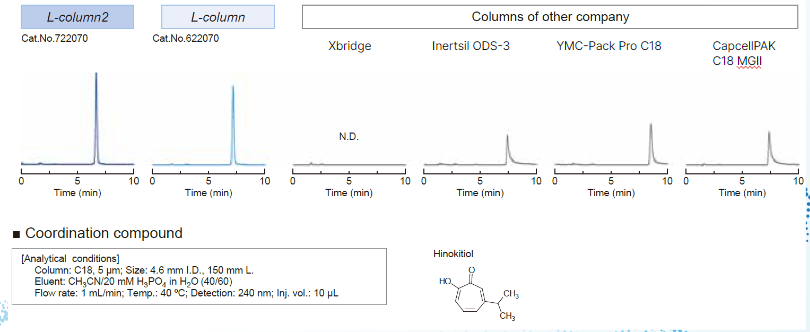
Coordinating compounds tail by interacting with the metal impurities in the column.
Compared to other companies’ columns, L-column2 is less affected by this and can obtain sharp peaks.
Good Reproducibility
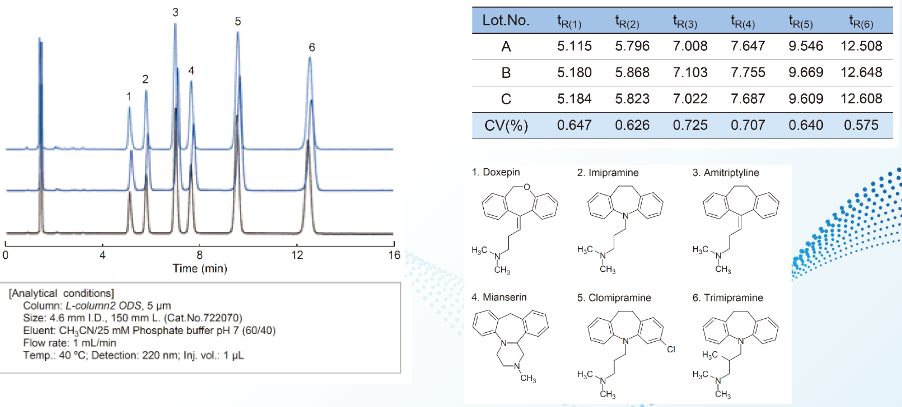
Basic substance analysis was performed using three different batches of filler.
There was almost no discrepancy in retention time for all ingredients.
L-column 2 is a column that can also be applied in quality control.
Low Pressure and High Number of Theoretical Plates
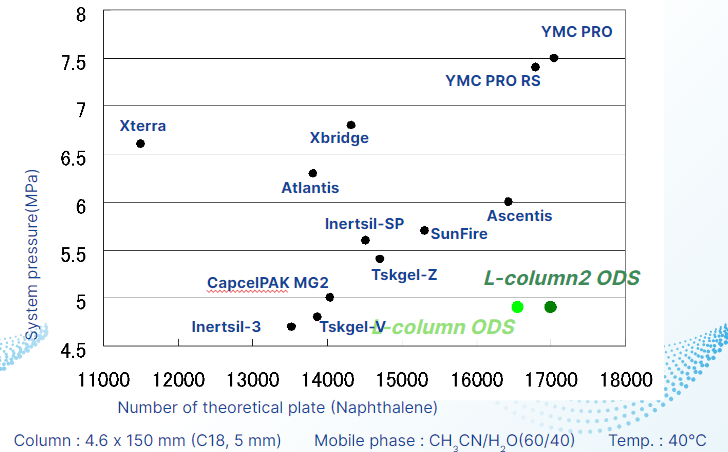
The higher the number of theoretical plates, the sharper the peak.
L-column2 maintains a high number of theoretical plates and can be analyzed with low system pressure.
Ideal ODS Column
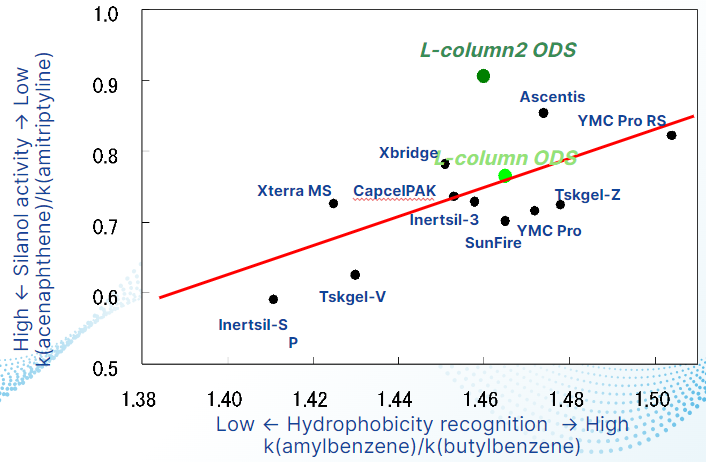
The larger the vertical axis, the lower the silanol activity. In other words, it is a column with less basic adsorption.
The larger the horizontal axis, the greater the resolution due to hydrophobic interactions.
As a feature of L-column2, the hydrophobicity recognition ability is similar to that of other companies, but the silanol activity is the lowest.
If you have trouble adsorbing the sample to the column, L-column2 may improve it.
Application
Japanese Pharmacopoeia: Purity Test of Pyridoxal Phosphate Hydrate
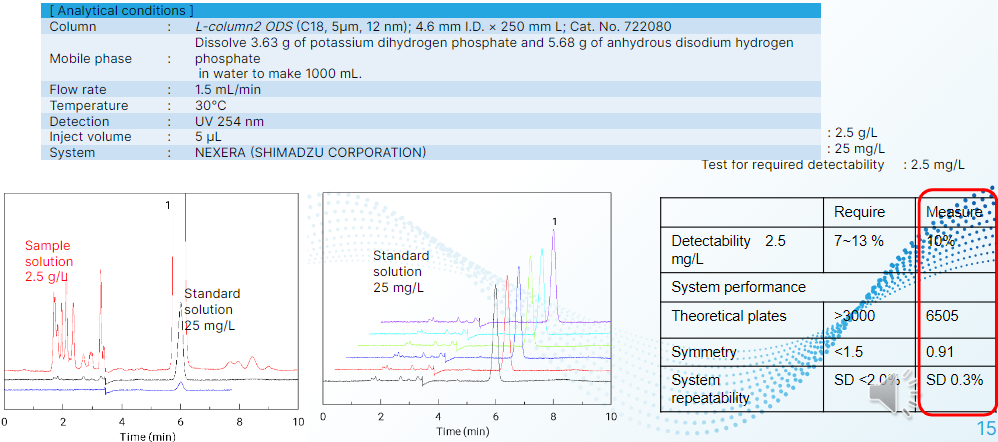
Pyridoxal phosphate ester hydrate was analyzed according to the Japanese Pharmacopoeia.
We use L-column 2 to confirm that all system conformity requirements have been met.
In addition, a good peak shape can be obtained even with a high-concentration sample, and it can be successfully separated from impurity peaks.
US Pharmacopoeia: Dexamethasone
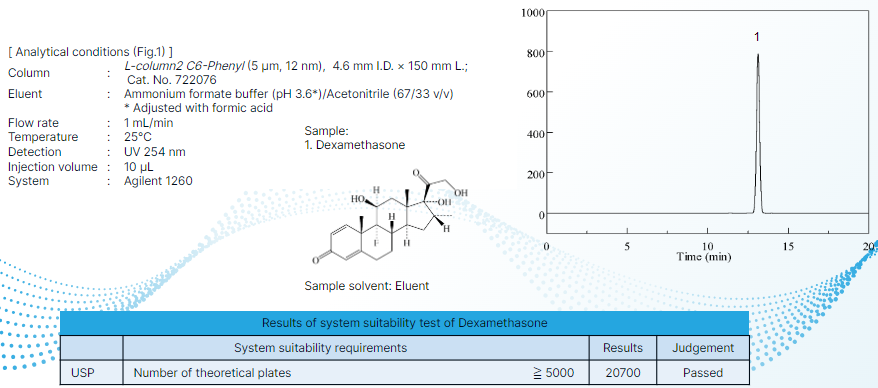
Here, the analysis was performed using the L-column2 series in accordance with the dexamethasone analogous substances test terms listed in the US Pharmacopoeia (USP) and the European Pharmacopoeia (EP).
USP used a phenyl-hexyl column to meet the reference value for a number of theoretical plates.
European Pharmacopoeia: Dexamethasone
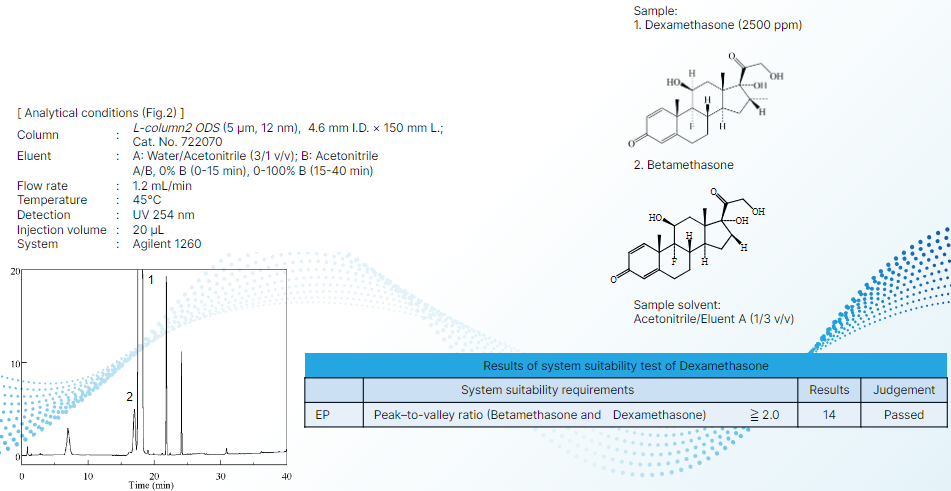
L-column2 conformed to both Pharmacy laws.
Powdered Rhubarb
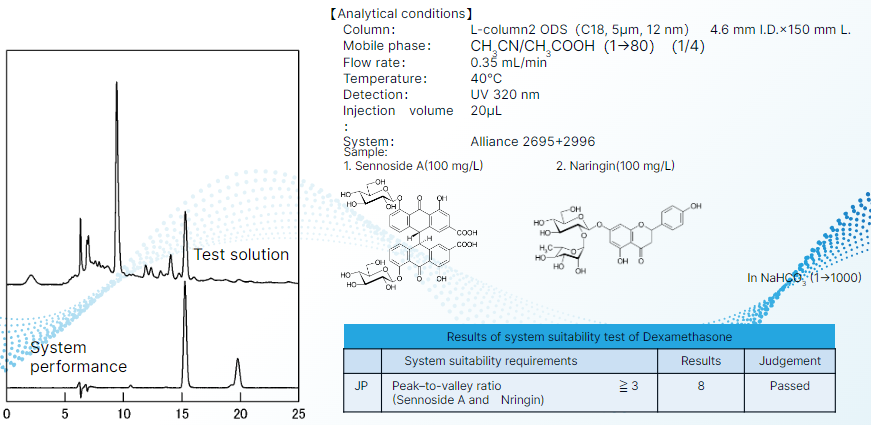
As a result of the test using L-column2 ODS, the separation degree was 8, which satisfied the above conditions.
Good separation was also obtained by analyzing the test solution extracted from rhubarb under the extraction conditions of the Japanese Pharmacopoeia.
Sennoside A has metal coordination properties and care must be taken when selecting columns.
